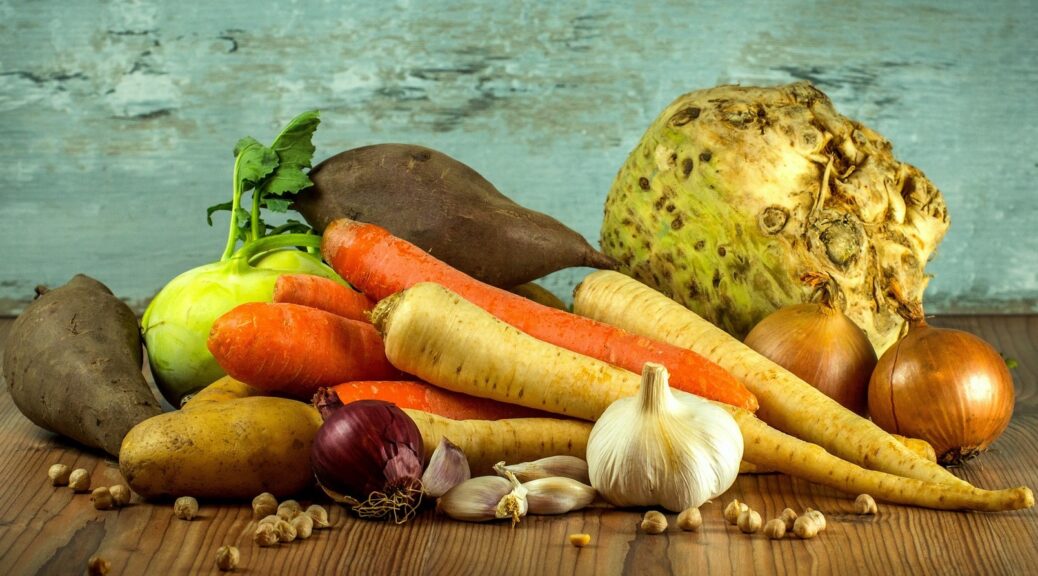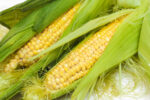
Best Ways to Prepare Vegetables for Cooking
In the 1800s, vegetables were mostly picked from gardens, bought fresh from the market, or stored in cellars for future use. People couldn’t afford to waste food, so advice on preparing and cooking vegetables was certainly appreciated.
INFORMATION BELOW FROM 1800s COOKBOOKS
GREEN VEGETABLES – Wash green vegetables first in warm water to remove insects. Then rinse in cold water. Or put a pinch of borax in the water. It will bring any live insect to the surface at once. Put in no green vegetables till the water boils, if you would keep all their sweetness.
STRONG VEGETABLES – Vegetables that are strong can be made much milder by tying a bit of bread in a clean rag and boiling it with them.
DRAINING VEGETABLES – Cabbages and other green stuffs need a lot of draining after cooking. Tie the green stuff in coarse muslin before putting into the pan. When done, lift out the muslin bag with a fork, empty the water from the pan and then let the cabbage drain into the pan, suspending the bag from a skewer placed across the top of the pan. Keep the pan on the side of the stove so that the cabbage does not cool. By the time the rest of the dinner is dished up, the green stuff will need very little pressing to make it quite dry.
==========================================================
ABOUT SPECIFIC VEGETABLES
Turnips – Turnips of small size have double the nutritious matter that large ones have.
Rutabagas – Rutabaga is the only root that increases in nutritious qualities as it increases in size.
Dandelions – Dandelions are very much improved by cultivation. If cut off, without injuring the root, they will spring up again, fresh and tender, till late in the season.
Lettuce – If the tops of lettuce are cut off when it is becoming too old for use, it will grow up again fresh and tender, and may thus be kept good through the summer. To keep lettuce crisp, put it into a paper bag and place right on the ice. It will keep a week in this way.
Celery – To keep celery, do not put it into water. Wrap it in a cloth, wet in cold water and place directly on the ice. Celery seed takes the place of celery for soup or stews when it is scarce; the same for parsley seed.
Onions – It is a good plan to boil onions in milk and water; it diminishes the strong taste of that vegetable. An excellent way of serving up onions is to chop them after they are boiled, and put them in a stew-pan with a little milk, butter, salt, and pepper, and let them stew about fifteen minutes. This gives them a fine flavor, and they can be served up very hot.
When cooked onions are required in a hurry, a handy way is to peel them, then grate them finely on a grater. If wanted for stew, pie, or for onion sauce, they will cook in half the time.
Beets – To prevent beetroot bleeding when boiling, broken roots can be sealed up by applying a red hot poker to the raw surface before the beetroot is put into the pot. Or, if preferred, the end of the roots can be thrust into the red hot fire and held there for moment. When you remove beets from the kettle, plunge them into a dish of cold water. The skins will slip off easily with the hand. Never cut or pare beets before cooking.
Green Peas – When green peas have become old and yellow, they may be made tender and green by sprinkling in a pinch or two of pearlash*, while they are boiling. Pearlash has the same effect upon all summer vegetables, rendered tough by being too old. If your well-water is very hard, it is always an advantage to use a little pearlash in cooking.
*pearlash – the white powder that remains when potash is baked in a kiln.
Tomatoes – Tomatoes nearly always have to be skinned before being used. To do this easily, place them in a basin and pour boiling water over them. Let stand a minute, and then drain.
Another method is to rub the tomatoes all over with the back of a knife to loosen the skins before peeling. This is said to be better than scalding.
Catsup – The best sort of catsup is made from tomatoes. The vegetables should be squeezed up in the hand, salt put to them, and set by for twenty-four hours. After being passed through a sieve, cloves, allspice, pepper, mace, garlic, and whole mustard-seed should be added. It should be boiled down one third, and bottled after it is cool. The garlic should be taken out before it is bottled. No liquid is necessary, as the tomatoes are very juicy. A good deal of salt and spice is necessary to keep the catsup well. It is delicious with roast meat and a cupful adds much to the richness of soup and chowder.
Potatoes – In the spring, it is a good plan to cut off a slice from the seed end of potatoes before you cook them. The seed end is opposite to that which grew upon the vine; which is easily distinguished. By a provision of nature, the seed end becomes watery in the spring, and unless cut off, it is apt to injure the potato.
If you wish to have potatoes mealy, do not let them stop boiling for an instant, and when they are done, turn the water off and let them steam for ten or twelve minutes over the fire. See they don’t stay long enough to burn to the kettle.
To give potatoes a good color, add one teaspoon of vinegar in the water just before the cooking is finished. This prevents old potatoes going black. It makes a great improvement.
New potatoes will scrape much easier if a little salt is dissolved in the water. When preparing new potatoes for cooking, put them in a pail, just cover with water, and stir vigorously with a stout stick. This removes the peel quickly, and the hands are not stained by scraping.
Sweet Potatoes – Before putting sweet potatoes in the oven, grease the skins and they can then be peeled easily and without any waste of the potato.
=================================================
STEP BACK IN TIME to the 1800s …. and imagine how difficult it was to prepare and cook food before gas and electricity was available.
Advice and cooking hints were sometimes included at the end of cookbooks and greatly appreciated. Click here for book description.
Available from Online Retailers (click here) Amazon, Kobo, Apple, Barnes&Noble, Scribd, 24 Symbols, Playster, Angues & Robertson, Mondadori Store, and more.
Also available as Regular print and Large print paperbacks on Amazon.
=================================================





